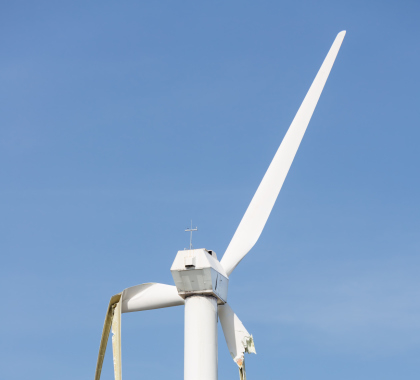“Planet of the Humans” follows writer, director and producer Jeff Gibbs around the country asking necessary but difficult questions about the claims made for green energy (unfounded for the most part), putting his questions to some of the industry’s most prominent proponents (charlatans and hucksters too often). Turns out renewable technologies are intensely dependent on fossil fuels and processes like open pit mining.
“It was becoming clear that what we have been calling green, renewable energy, and industrial civilization are one and the same,” Gibbs concludes. “Desperate measures not to save the planet, but to save our way of life.”
Apocalypse Now
“Planet of the Humans” is not a paean to capitalism (this is a Michael Moore production after all) nor does it contemplate anything other than an apocalyptic environmental crisis, with a strong Malthusian panic expressed throughout.
Humans are just another species, and our time may be up.
Intermittency Requires Fossil Fuels
Gibbs visits a solar festival with a music stage powered by “100 percent solar energy.” When he pokes behind the scenes, during a rainfall, he finds the solar panels are being packed up and power switched over to a back-up biofuel generator. That proved inadequate so the organizers simply plugged into the local grid.
Late in the documentary, Gibbs visits another music fest touted as fully powered by solar energy. Not so fast. A bemused festival worker behind the scenes reveals that the solar array set up for the event generated enough juice to power a toaster.
Solar, like wind power, is at the mercy of the elements. It has an “intermittency” problem and for stability often requires backup from conventional power generating sources.
Green Cronyism, Profiteering
We’ve been hearing about the promise of a green energy future at least since the Obama administration and a $100 billion stimulus package. Remember all of those “shovel ready projects?”
Former Vice President Al Gore makes several appearances in the film, and you get the impression every green energy project he’s engaged in is for making a quick buck at taxpayer expense. In one interview clip, Al Gore and billionaire Virgin Group founder Richard Branson are being interviewed. “Is Al Gore a prophet?” asks the interviewer. “How do you spell prophet?” Branson quips. A hearty laugh is had all around.
They’re not the only ones getting exposed as green-energy profiteers in “Planet of the Humans.” Venture capitalists, billionaire donors like Michael Bloomberg, major banks, environmental groups like the Sierra Club, activists like Robert F. Kennedy Jr., all get their close ups. The insufferable Bill McKibben, whose 350.org has been scolding America about its fossil fuel profligacy for years, comes off looking like America’s biggest green phony.
Corporate greenwashing is everywhere in this documentary. At a press conference in Lansing, Michigan, to introduce General Motor’s Chevy Volt, a company official is nonplussed by a reporter’s question about where the energy is coming from to charge the electric vehicle. Answer: Lansing’s power grid, 95 percent fueled by coal.
Wind, Solar, and Biomass, Oh My!
Wind farms get a close look. Gibbs visits one construction site in northern Michigan where workers are erecting a 482-foot wind turbine. It’s built with 800 yards of concrete, 140 tons of steel, and 36,000-pound turbine blades made of fiberglass and balsam. In total, the tower will weigh 800,000 pounds. Not exactly what you’d call treading lightly on the Earth.
Gibbs also discovers environmental activists are unhappy with windmills in their back yard, especially when they contemplate what construction sites do to mountain tops—hint: they’re cleared of trees. Estimated life cycle: about 20-25 years for the average wind turbine.
Particularly damning are scenes where Gibbs travels to solar energy sites with Ozzie Zehner, a green energy researcher, who explains solar panels are not actually made from sand (another convenient fiction) but mined quartz. Solar facilities could not exist without fossil fuel infrastructure.
Zehner visits the desert site of the Ivanpah solar complex near the California-Nevada border. At its launch then Gov. Arnold Schwarzenegger touted it as converting an apparently empty desert into productive use. “I see miles and miles of a gold mine,” he crowed. But Zehner explains that Ivanpah, which uses an array of mirrors to capture solar energy, has to burn natural gas for “hours” to start up every morning.
And, it turns out, deserts are not dead. Construction of desert solar arrays causes huge environmental damage, including the destruction of Joshua trees that can live up to 150 years.
“We’re basically just being fed a lie,” Zehner concludes.
Then there’s “biomass,” a euphemism for “cut down forests, burn trees.” Not exactly “carbon neutral.”
One of the more outrageous scenes takes place in L’Anse, Michigan, in the Upper Peninsula. A “biomass” plant situated in this town of 2,000 people on Lake Superior is burning trees, scrap tires, and creosote-treated railroad ties. A local woman fighting the plant talks about how, in the winter, the soot from the plant blackens the snow near schools and a senior housing project. She says the plant got an $11.5 million renewable energy grant.
‘Con Game’
Caught between exposing renewable energy projects for the blatant con game that they are, and all those people scurrying around the planet like cockroaches, “Planet of the Humans” fails to come up with a reasonable way forward. Still, for those who haven’t been paying attention, it’s an entertaining and educational primer on the hype, phoniness, and lies behind green energy projects.
John Couretas ([email protected]) is editor-at-large at the Acton Institute in Grand Rapids, Michigan. This is an edited version of a May 1 post that originally ran on the Acton PowerBlog.




